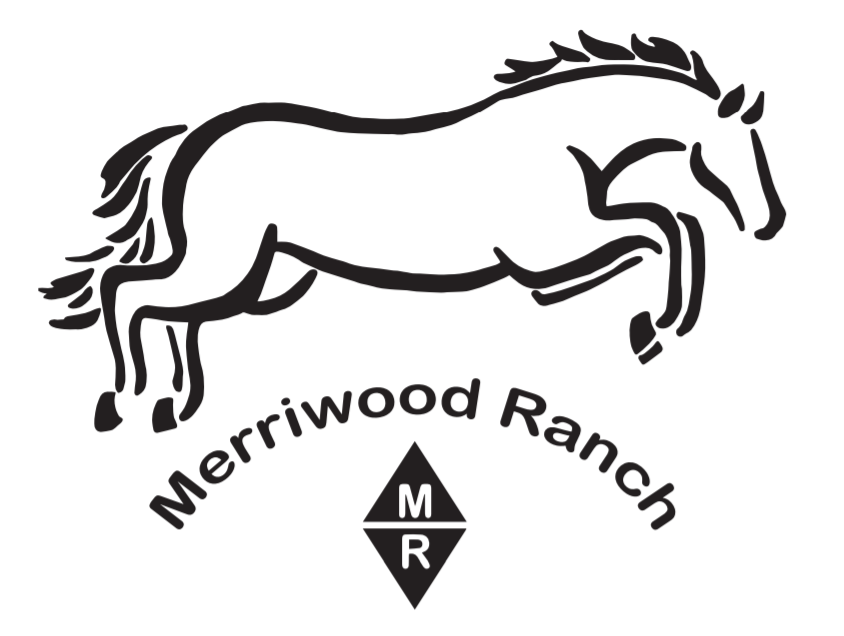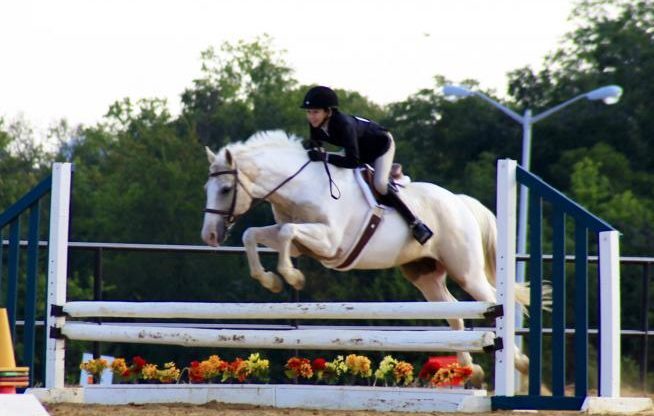Initially, children say they want to learn how to ride a horse, without realizing there are two different types of horseback riding to choose from: English horseback riding and Western horseback riding.
There are 5 main differences between English and Western horseback riding:
- Saddle
- Direction
- Clothing
- Horses
- Activities
If you’re not sure which style of horseback riding is right for your child, we put together this comparison guide that goes more in-depth into these 5 main differences. Learn more about each style of horseback riding as you make your decision.
What Is English Horseback Riding?
English horseback riding came from the training and discipline used in military calvaries. These horses needed to learn to obey their riders calmly and quietly. It is now used mainly for sport.
Below is some information about key elements of English Horseback Riding that differentiate it from Wester Style Horseback Riding.
- Saddle
- Direction
- Clothing
- Horses
- Activities
English Saddle
The English saddle is smaller and lighter than what’s used in Western style horseback riding. It was designed to help riders be closer to the horse’s back and maximize mobility of both horse and rider. Unlike the Western saddle, it does not have a horn to grip and there are no places for attachments because English horseback riders do not need a lot of extra gear to transport with them.
Direction in English Horseback Riding
In English horseback riding, riders take the reins in each hand, which is in direct contact with the horse’s mouth, to direct them in speed and direction. They also use their legs to direct the horse with different cues. English horseback riders need good coordination between their legs and reins to maintain control of their horse.
English-Style Clothing
English horseback riders wear high boots with a low heel, white pants, a dark-colored jacket and white gloves when they ride. The purpose of their attire is to be understated and refined.
English Horses
There are different breeds of horses more suited for English-style horseback riding. These horses are usually taller and leggy, helping them travel over long distances at various speeds, as well as helping them jump over a variety of obstacles.
English Horseback Riding Activities
One of the more important elements to consider with your choice of horseback riding are the activities each discipline will enable your child to compete and participate in. There are 3 key activities associated with English Horseback Riding:
- Dressage
Performers are judged on 1) accuracy, obedience, and submission of horse, and 2) correctness, straightness and presence of the rider. Horse and rider follow a set pattern of movements, including:- Walking in circles and straight lines
- Changing pace and direction
- Lateral movements and collections and extensions of gait
- Hunter-Jumper Discipline
There are two English horseback riding classes that equip riders to compete in the Hunter-Jumper discipline: hunter and jumper classes.- Hunter Classes – In the hunter discipline, riders enter the arena with their horses, along with a group of other participants, and are judged on changes of gait and direction. The horse is judged for their gait and elegance, as well as their obedience to rider’s aids.
- Jumper Classes – In the jumper classes, horses must learn to negotiate a series of fences and are not judged on their carriage or gait required of other disciplines.
- Eventing
This training has roots in the military. Horses need stamina while also showing obedience to their rider. This activity usually includes dressage, cross country jumping, and stadium jumping. Any type of horse can take part in eventing.
English horseback riding is a harder discipline to master, but if your child is just beginning to ride, it’s a great place to start. After mastering this discipline, transitioning to Western style horseback riding will be much easier.
If you’re interested in having your child start English horseback riding lessons in the Dallas-Fort Worth area, we have a great facility and program. We offer English horseback riding lessons throughout the school year and summer riding camps in the summer. Learn more about summer riding camps and horseback riding lessons at Merriwood Ranch.
What Is Western-Style Horseback Riding?
Western-style horseback riding began with cattle ranching. Riders needed to be safe, secure, and comfortable on their horse while riding at high speeds and maneuvering quickly. Cowboys also needed to carry a lot of equipment with them that they would need for the day.
Due to the nature of this work and adaptations with horseback riding, it created the most noticeable differences between Western and English style horseback riding, as we’ll explain below.
- Saddle
- Direction
- Clothing
- Horses
- Activities
Western Saddle
The saddle used in Western-style horseback riding is larger and heavier than the English saddle. It was designed to spread the weight of the rider over a larger area of the horses back. This made it more comfortable for long days herding cows.
It also has a large, handle-like structure at the front (called the horn) that is used to control cattle. Riders will wrap the rope they use to lasso an animal around the horn to maintain control of that animal.
Stirrups were also included with the Western saddle so riders could mount and dismount quickly.
Direction in Western Style Riding
Western-style riders have little to no contact with their horse when riding. They use their saddle, weight, and neck-reins to direct their horse. These reins are held in one hand and can be split or in one continuous loop.
Western Clothing
Western-style riders are more casual in their attire – wearing jeans, leather chaps, long sleeve shirt, and a cowboy hat. Since cowboys would usually be out in the sun on their horse for a long time, they needed to be comfortable and covered to avoid getting sunburned.
Western Horses
Horse breeds used for Western-style rides are usually more compact and capable of steady travel for long periods of time, with the ability to speed up quickly to chase stray cattle.
Western Horseback Riding Activities
Below are some of the activities you can participate in with Western-style horseback riding:
- Showing Horses
Horses perform in an arena and are judged on changes of gait and direction, as well as appearance, style, and movement. - Barrel Racing
Horse and rider enter an arena at a high speed and must negotiate a pattern around three barrels, turning tightly and quickly around each one. - Roping Events
At roping events, riders must accurately aim and throw their lasso at steers while riding on their horse. - Western Dressage
Also known as “Reining,” Western dressage is when a horse and rider perform a set pattern of movements (circles, spins, slides, and turns) and are judged on the horse’s obedience to their rider and accuracy to perform what they’re being instructed to do. - Competitive Trail Classes
In these events, horses must enter an arena one at a time and work through a series of obstacles (gates, patterns around poles, etc.). The idea is to help riders and horses learn how to navigate varying trails and terrains.
How Is English and Western-Style Horseback Riding Similar?
Whichever horseback riding discipline you choose, your child will learn valuable lessons (like proper posture required to help them maintain balance and control of their horse), what it takes to take care of their animal, how to practice and compete well, and explore their surroundings.
Learn More About English Horseback Riding at Merriwood Ranch

